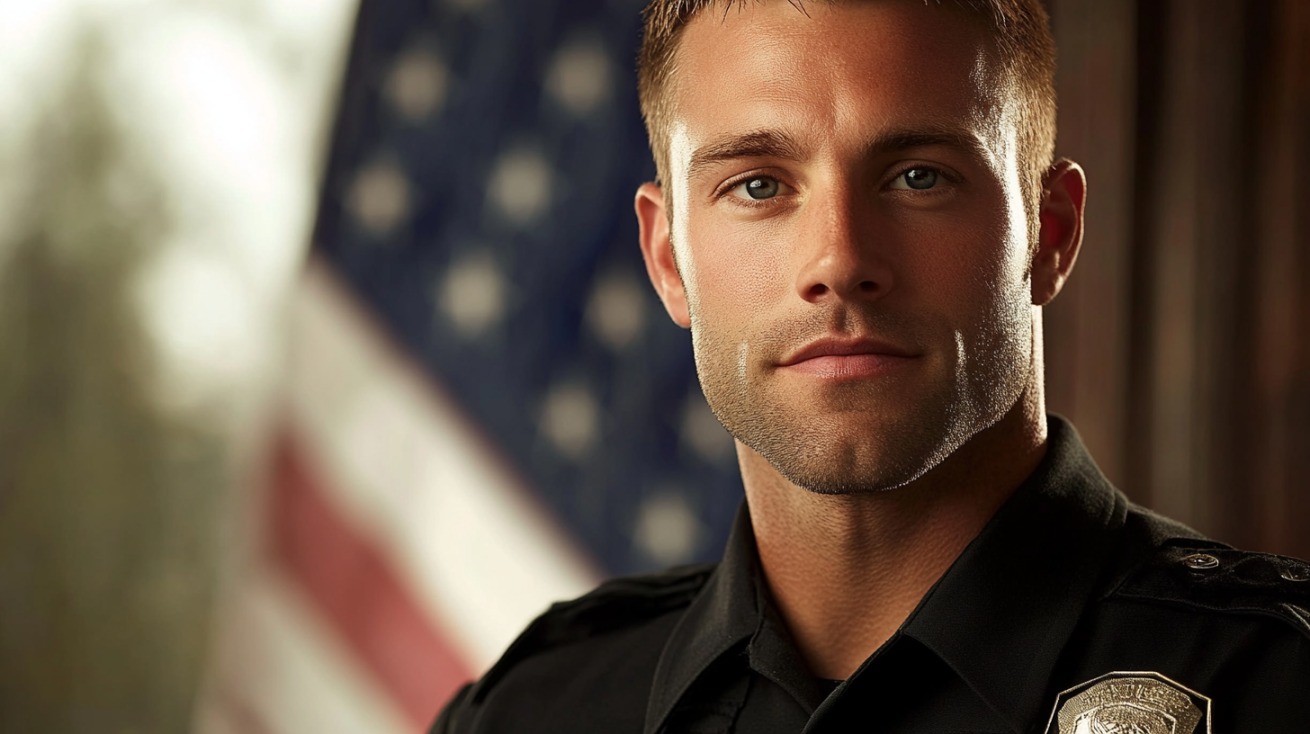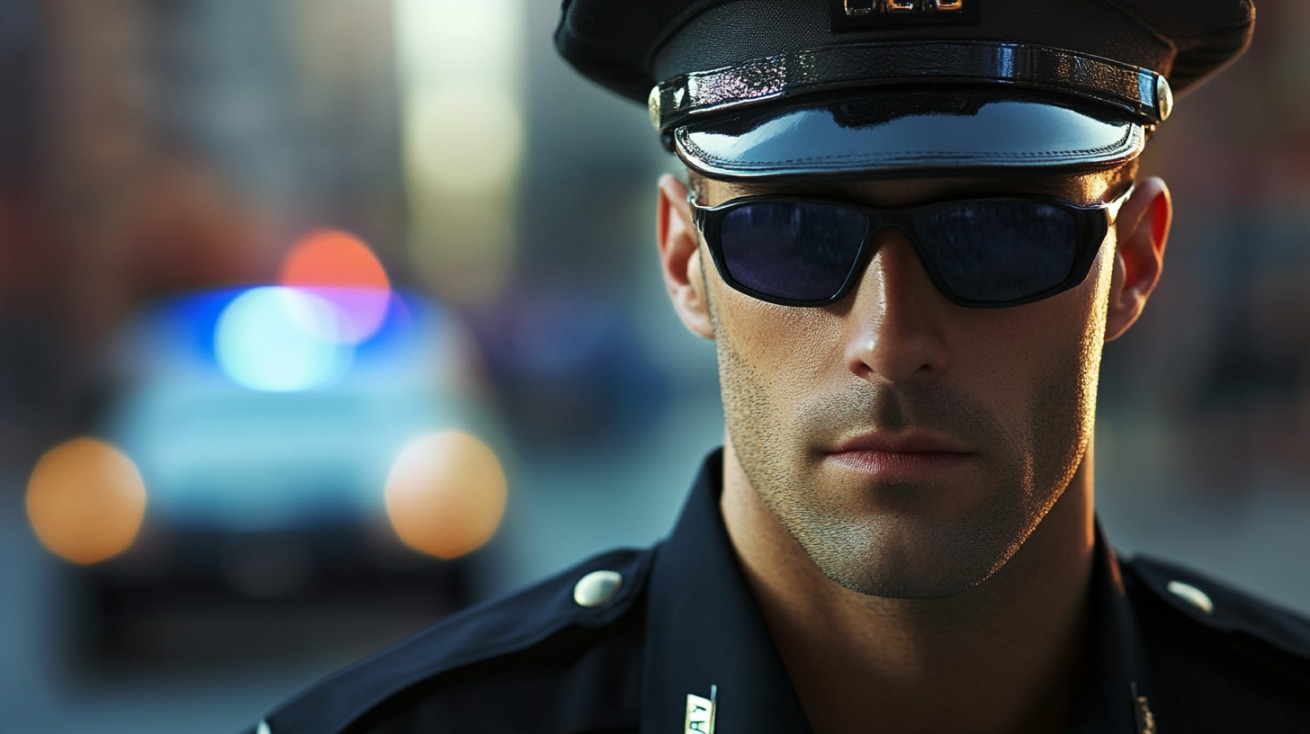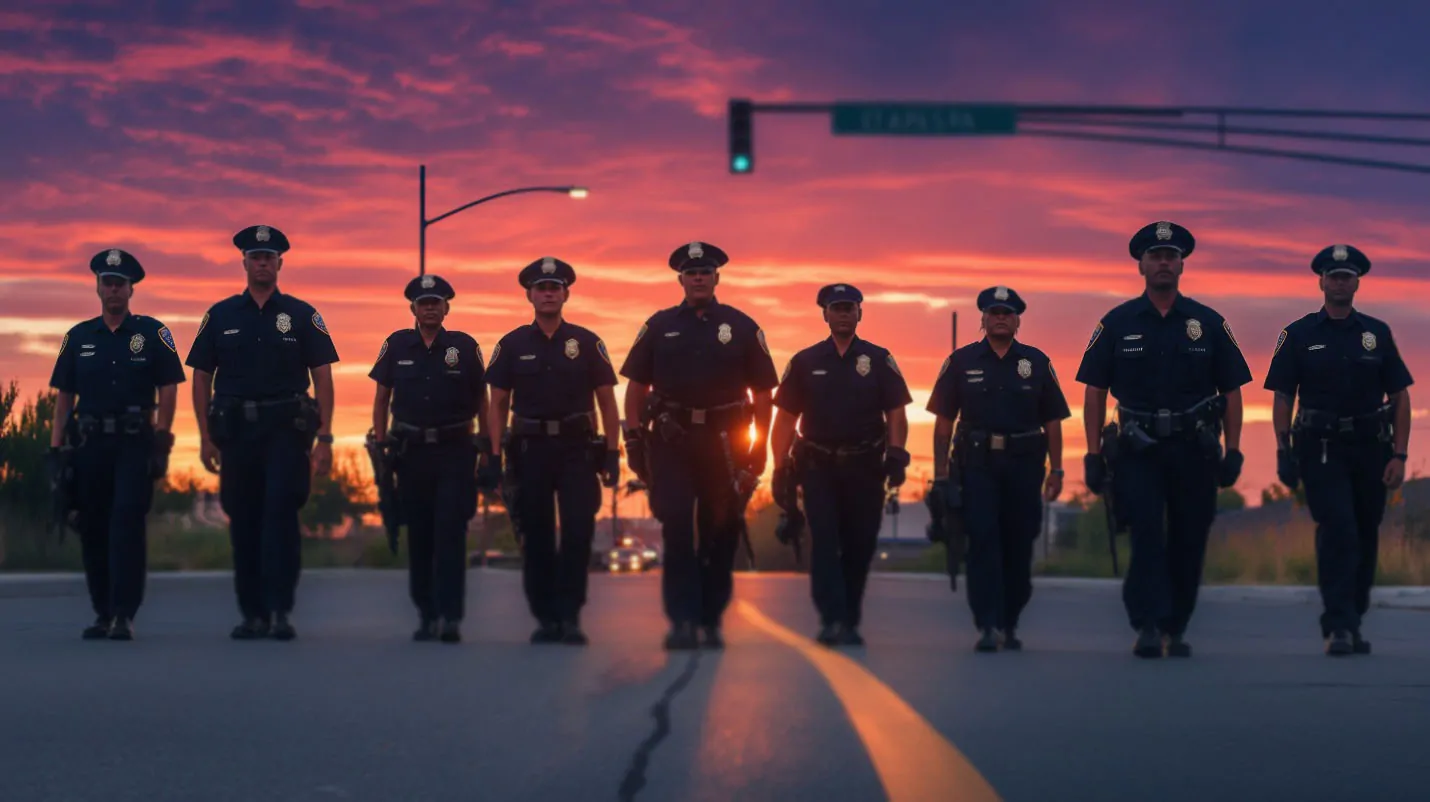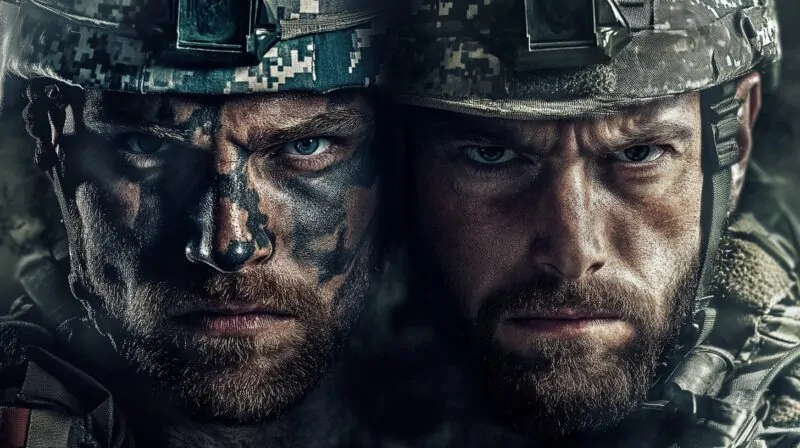Hierarchy forms the backbone of law enforcement in the United States. Rank structure establishes order, defines roles, and creates pathways for advancement.
Different agencies, metropolitan, state, and sheriff’s departments, adopt their variations, but the principle remains the same: organized leadership with defined responsibility.
Clarifying these ranks helps remove confusion and reveals how authority flows within each type of agency.
| Agency | Rank | Responsibilities |
|---|---|---|
| Metropolitan Police | Police Officer / Patrol Officer | Patrolling, emergency response, arrests, citations, community engagement |
| Police Technician | Traffic direction, citations, clerical duties, radio dispatch | |
| Detective | Investigations, interviews, evidence handling, case preparation | |
| Corporal | Field training, supervision, performance reporting | |
| Sergeant | Shift supervision, report approval, coordination, training | |
| Lieutenant | Unit management, policy enforcement, personnel evaluation | |
| Captain | Division command, budget, planning, community outreach | |
| Deputy Chief | Strategic operations, crisis response, personnel management | |
| Assistant Chief | Program oversight, policy, training, performance monitoring | |
| Chief of Police | Department leadership, policy, budgeting, media relations | |
| Police Commissioner / Superintendent | Civilian oversight, strategic planning, accountability | |
| State Police | Trooper | Highway patrol, crash investigation, emergency support |
| Trooper First Class | Mentorship, field leadership, special assignments | |
| Sergeant | Team coordination, evaluations, major incident response | |
| Lieutenant | District oversight, report review, community safety | |
| Captain | Division leadership, budget, inter-agency liaison | |
| Major | Regional strategy, policy standardization, investigations | |
| Lieutenant Colonel | Executive leadership, division monitoring, crisis planning | |
| Colonel | Department head, statewide policy, public representation | |
| Sheriff’s Department | Deputy Sheriff | Patrol, jail management, document serving, emergency response |
| Corporal | Field supervision, training, performance monitoring | |
| Sergeant | Team supervision, report review, scheduling | |
| Lieutenant | Zone/unit management, equipment oversight, audits | |
| Captain | Division oversight, budget, policy procedures | |
| Division Chief | Department-wide strategy, performance evaluation | |
| Under-Sheriff | Daily operations, inter-agency coordination, regulation compliance | |
| Sheriff | Elected leader, department vision, policy enforcement, public communication |
Table of Contents
ToggleMetropolitan Police Ranks
City police departments operate within a structured hierarchy that keeps day-to-day operations running with efficiency and discipline.
Each rank serves a specific role, contributing to public safety, supervision, and command-level decisions.
Metropolitan departments typically serve urban areas, and as such, their rank structure is designed to handle high-density populations, fast-paced crime patterns, and administrative complexity.
1. Entry-Level Positions

Officers in these positions represent the majority of uniformed personnel. Daily duties put them in direct contact with the public, making quick decision-making and presence on the streets essential.
Police Officer / Patrol Officer
Responsible for frontline law enforcement, police officers carry out the most visible work.
Primary duties center on patrolling assigned areas, responding to 911 calls, enforcing local laws, and performing arrests when necessary.
Officers often work shifts covering all hours, including nights and weekends, and are typically the first to respond to emergencies.
- Patrolling streets, neighborhoods, and public spaces
- Responding to emergencies, disturbances, and crimes in progress
- Conducting vehicle stops and issuing citations
- Completing arrest reports and submitting incident documentation
- Maintaining community engagement through proactive policing
Police Technician
Although not sworn officers, police technicians play a critical support role within many departments.
Their responsibilities differ depending on departmental structure, but their goal is consistent: ease operational burden on patrol officers and command staff.
- Directing traffic during large public events or emergencies
- Issuing citations for traffic or parking violations
- Handling clerical work, records management, and data input
- Managing radio communication and dispatch assistance
2. Investigative Role
Some officers shift away from patrol to focus on criminal investigations. These positions require significant experience, problem-solving abilities, and attention to detail.
Detective
Detectives do not operate in uniform and generally work in specialized units such as burglary, homicide, narcotics, or cybercrime. Investigations may take weeks or even months, requiring extensive follow-up.
- Gathering evidence at crime scenes and ensuring chain-of-custody
- Conducting interviews and interrogations
- Developing leads and coordinating with other departments
- Writing affidavits and assisting in obtaining warrants
- Preparing cases for presentation in court and working with prosecutors
3. Junior Leadership
Personnel at this tier begin to take on supervisory roles. Their responsibilities extend slightly past fieldwork and begin to include the guidance of less-experienced colleagues.
Corporal
Often the first promotional step for a police officer, corporals are expected to act as field trainers or team leads. This hybrid role allows continued participation in patrol duties while testing leadership capacity.
- Supervising small patrol units or specialty teams
- Conducting training for probationary officers
- Providing real-time feedback during shifts
- Reporting performance evaluations to higher-ranking officers
- Taking command in the absence of a sergeant
4. Middle Management
At this stage, the focus begins to shift toward strategy, coordination, and supervisory responsibilities that affect broader areas or multiple teams.
Sergeant
Sergeants manage personnel on shifts or within a unit. Their roles involve performance oversight, decision-making under pressure, and administrative accountability.
- Overseeing the work of patrol officers and corporals
- Approving reports and monitoring arrests for legal accuracy
- Coordinating responses to major incidents or crises
- Training new officers and organizing shift assignments
- Enforcing internal policies and department protocols
Lieutenant
Often responsible for supervising multiple sergeants and larger units, lieutenants act as the link between the command staff and front-line supervisors. Their scope of work includes planning, evaluation, and coordination.
- Managing unit operations or precinct shifts
- Reviewing departmental policies and ensuring compliance
- Evaluating personnel and handling internal complaints
- Serving as duty commander during major events
- Coordinating with city departments and emergency services
5. Senior Command

Strategic leadership and organizational management fall under this level. Senior command officers ensure that the department operates effectively and responds appropriately to both internal and external demands.
Captain
Captains command entire divisions, such as traffic enforcement, homicide, or special victims. Their focus rests on leadership, resource management, and long-term planning.
- Managing unit budgets and personnel
- Monitoring overall division performance
- Coordinating with other captains and executive staff
- Overseeing investigations and special operations
- Leading community outreach initiatives
Deputy Chief
As second-in-command, deputy chiefs bear responsibility for supervising major functions within the department. Their duties extend across multiple divisions and often involve inter-agency collaboration.
- Executing long-term operational strategies
- Coordinating department-wide efforts in response to crises
- Managing high-level personnel issues and evaluations
- Acting as chief spokesperson in the absence of the Chief
- Bridging communication between internal divisions and city government
Assistant Chief
Found in larger metropolitan departments, assistant chiefs help maintain operational consistency across sprawling jurisdictions. Their focus often includes special programs or interdepartmental coordination.
- Specialized crime units or large-scale task forces
- Department training academies or recruitment divisions
- Policy development and implementation reviews
- Research and technology integration
- Oversight of performance metrics across regions
6. Executive Leadership
These individuals lead the department with full administrative authority and are the public face of law enforcement within the city.
Chief of Police
Accountable for the department’s overall performance, the chief of police holds the highest-ranking position among sworn officers. Decisions made at this level influence department culture, strategic goals, and public relations.
- Overseeing the development and enforcement of policy
- Serving as the principal liaison with city officials
- Addressing public concerns and maintaining media relations
- Managing the department’s annual budget
- Making final disciplinary decisions on personnel conduct
Police Commissioner / Superintendent
In cities with appointed oversight positions, the commissioner or superintendent serves as the civilian authority over police operations. The role focuses on accountability, transparency, and executive decision-making.
- Defining departmental vision and reform agendas
- Collaborating with the mayor and city council on law enforcement goals
- Monitoring public complaints and community outreach efforts
- Leading high-level strategic planning and innovation
- Ensuring lawful and ethical conduct across all levels
State Police Ranks
State police agencies operate at the statewide level, supporting both local departments and enforcing laws across large regions. They often fill gaps where smaller municipalities lack sufficient resources.
The rank structure within these agencies provides a clear framework for leadership, field supervision, administrative function, and strategic execution.
Hierarchy within state police mirrors military models more closely than some local departments. Each role contributes to a chain of command that emphasizes discipline, operational readiness, and interagency cooperation.
1. Field Level

State troopers form the foundation of state law enforcement. Their presence extends across highways, rural zones, and state facilities.
Trooper
Troopers represent the first line of enforcement across state jurisdictions. Their presence on highways helps reduce traffic incidents, enforce vehicular codes, and support public safety.
- Patrolling highways and interstates
- Investigating vehicle crashes and hazardous material spills
- Assisting local police during emergencies
- Conducting drug interdiction and contraband enforcement
- Providing security during large-scale events or disasters
Trooper First Class
Awarded to those with proven experience and field performance. These officers act as informal leaders and subject matter experts during critical operations.
- Mentoring and training new recruits
- Taking lead roles during coordinated enforcement efforts
- Serving as point of contact for special assignments
- Assisting supervisors with field operations
2. Supervisory Ranks
Supervisory positions begin to incorporate administrative responsibilities while maintaining a visible role in field enforcement.
Sergeant
Sergeants serve as the link between rank-and-file troopers and command-level officers. They ensure smooth daily operations and consistent enforcement standards across their teams.
- Delegating patrol assignments and coordinating coverage
- Conducting trooper evaluations and mentoring
- Responding to major incidents and coordinating responses
- Maintaining records and reviewing enforcement data
Lieutenant
Lieutenants expand into more administrative roles while still retaining operational influence. Their scope often includes oversight of regional offices or specialized task forces.
- Supervising large teams or entire geographic districts
- Reviewing and approving case files and arrest reports
- Leading community outreach and safety initiatives
- Managing departmental resources and personnel distribution
3. Senior Officers
Senior officers take on high-level oversight of entire departments, regions, or specialty units. Their focus shifts heavily toward policy, interagency collaboration, and advanced planning.
Captain
Captains operate at a strategic tier, ensuring that broader objectives align with field operations. Their leadership spans both personnel management and logistical coordination.
- Overseeing regions or divisions such as aviation, training, or cybercrime
- Managing operational budgets and supply chains
- Implementing statewide training standards
- Acting as liaison to other government agencies
Major
Majors analyze and coordinate statewide crime prevention strategies. Their input helps shape how resources are distributed and how goals are evaluated.
- Directing regional strategy across multiple districts
- Standardizing policy enforcement and department communication
- Supervising major operations and specialized investigations
- Collaborating with legislative bodies and public safety officials
Lieutenant Colonel
One step beneath top command, lieutenant colonels serve as executive-level leaders across all branches of the organization.
- Monitoring efficiency of multiple divisions
- Conducting performance reviews for commanding officers
- Ensuring cohesive application of state law enforcement strategies
- Guiding crisis response and operational readiness plans
4. Top Leadership
The head of the agency is responsible for guiding the mission of the state police and representing the department at the highest levels of government.
Colonel
As the top-ranking officer, the Colonel defines priorities, sets vision, and communicates on behalf of the department during major incidents or public safety crises.
- Shaping and issuing department-wide policy
- Advising governors and legislative bodies
- Representing state police at national events and press briefings
- Leading response efforts during disasters or statewide emergencies
- Overseeing all budgetary, operational, and strategic components
Sheriff’s Department Ranks
Sheriff’s departments operate at the county level and serve as the principal law enforcement agency for areas without municipal police forces. Their jurisdiction typically includes unincorporated communities, rural districts, and county-managed facilities like jails and courthouses.
Unlike metropolitan or state agencies, sheriffs are often elected officials, which places these departments in a distinct administrative and political position.
A clearly defined rank structure allows for smooth operations, command clarity, and accountability throughout the agency. Responsibilities range from managing corrections facilities to overseeing court security, civil process services, and rural patrol functions.
1. Entry and Field Roles
At the ground level, these roles form the operational core of the department. Duties focus on direct interaction with the community, offender management, and foundational police procedures.
Deputy Sheriff
Deputies are the primary enforcement personnel in a sheriff’s department. Their roles blend patrol duties with corrections and civil process responsibilities.
- Patrols rural and suburban areas within the county.
- Maintains order inside county jails and detention facilities.
- Serves legal documents such as subpoenas and eviction notices.
- Transports inmates to and from court or state facilities.
- Responds to emergency calls and conducts investigations.
Operating under the elected sheriff, deputies are expected to be versatile.
Unlike city officers who may focus exclusively on patrol, deputies often shift between court security, field response, and jail supervision based on departmental needs.
Corporal
Corporal rank often represents the first step into leadership. This role involves field supervision and mentorship of newer deputies.
- Acts as a team leader during patrol shifts.
- Conducts on-the-job training for probationary deputies.
- Monitors performance and ensures field procedures are followed.
- Reports directly to sergeants about squad effectiveness.
Corporal duties help ensure consistent field performance and reinforce departmental protocols during active assignments.
2. Mid-Level Leadership

This tier is essential for tactical leadership, resource coordination, and operational quality control. It connects field operations to upper management while keeping a direct hand in day-to-day law enforcement activities.
Sergeant
Sergeants supervise teams of deputies and corporals during shifts or within specific zones.
- Assigns patrol areas and operational tasks.
- Responds to high-risk incidents as the on-scene supervisor.
- Reviews reports and ensures accuracy in documentation.
- Manages scheduling and leave approvals.
In critical situations, sergeants take command until higher-ranking personnel arrive. They serve as key evaluators of both personnel performance and incident response quality.
Lieutenant
Lieutenants carry broader oversight, managing either geographic areas or specialized units such as criminal investigations or court services.
- Reviews operations across multiple teams or a full shift.
- Oversees scheduling, equipment allocation, and policy enforcement.
- Conducts internal audits and incident evaluations.
- Acts as liaison between upper command and field supervisors.
Lieutenants must ensure that logistical needs are met and that departmental goals are being followed at the team level.
3. Division and Department Heads
These ranks are responsible for large-scale planning, division-wide oversight, and implementation of long-term policies. Strategic thinking and leadership define this group.
Captain
Captains oversee divisions such as patrol, jail operations, investigations, or civil process.
- Develops division budgets and reviews resource use.
- Coordinates multi-agency operations and emergency response planning.
- Approves operational procedures within the division.
- Trains mid-level leaders on management practices.
As department size grows, captains serve as a vital conduit between field-level enforcement and administrative policy.
Division Chief
Division chiefs supervise multiple captains and ensure consistency across different sections of the department.
- Sets department-wide performance goals.
- Reviews division effectiveness and identifies areas for improvement.
- Initiates large-scale policy changes in collaboration with the Under-Sheriff.
- Leads internal affairs investigations when needed.
Their leadership is instrumental in shaping departmental culture and operational discipline.
Under-Sheriff
Often the second-highest authority, the under-sheriff handles the department’s daily operations and implements the sheriff’s vision.
- Supervises all division chiefs and captains.
- Coordinates strategic initiatives and inter-agency cooperation.
- Reviews departmental discipline, promotions, and high-level disputes.
- Oversees compliance with state and federal regulations.
Under-sheriffs must possess broad knowledge of every function within the department and serve as the sheriff’s right hand in decision-making.
4. Elected Leadership
Leadership at the top reflects not only law enforcement expertise but also political accountability. County residents elect The sheriff directly and must balance community expectations with internal management.
Sheriff
Sheriffs are responsible for the overall direction, reputation, and legal integrity of their department.
- Sets law enforcement priorities across the county.
- Manages departmental budget and public communication.
- Responds to media inquiries, public forums, and political stakeholders.
- Appoints under-sheriffs and division chiefs.
- Engages with county officials to align on policy and funding.
Sheriffs are ultimately answerable to the voting public, unlike chiefs of police who are appointed. Their leadership extends to personnel decisions, community policing strategies, and crisis response.
The Bottom Line
Police rank structures define authority, outline responsibilities, and guide progression.
Each rank, from street officer to elected sheriff, contributes to operational effectiveness and public confidence.
Career paths in law enforcement reflect experience and merit and a broader commitment to safety and civic leadership.
Related Posts:
- US Navy Ranks in Order - From Seaman to Admiral
- Complete List of US Army Ranks in Order - Rising to the Top
- Transgender Military Ban Resurfaces Under New Trump Order
- The Power of Guerrilla Warfare - Small Armies, Big Impact
- Top 10 Military Drones - The Ultimate Power in the…
- Real-Life Cases Where Police UAV Made a Difference







